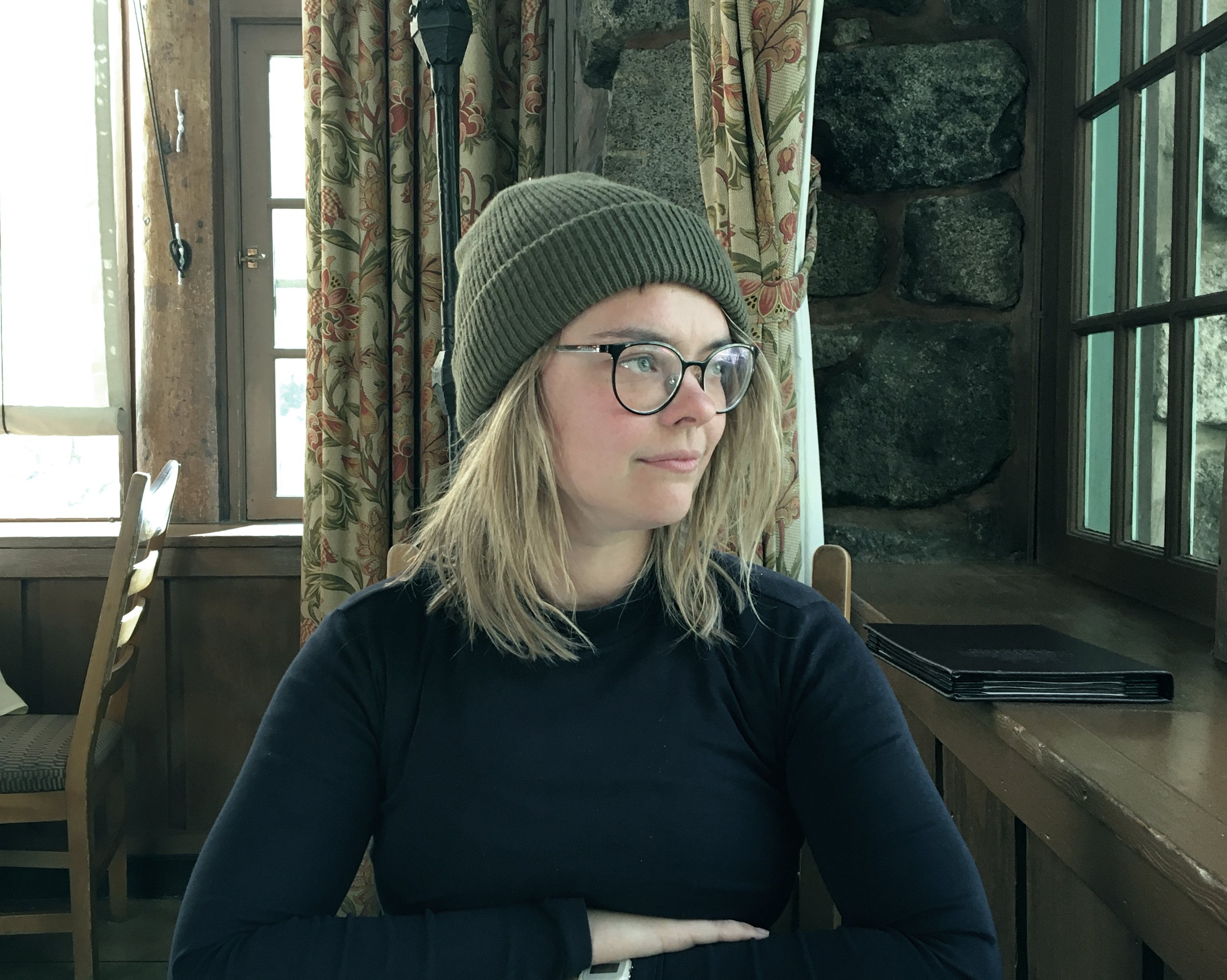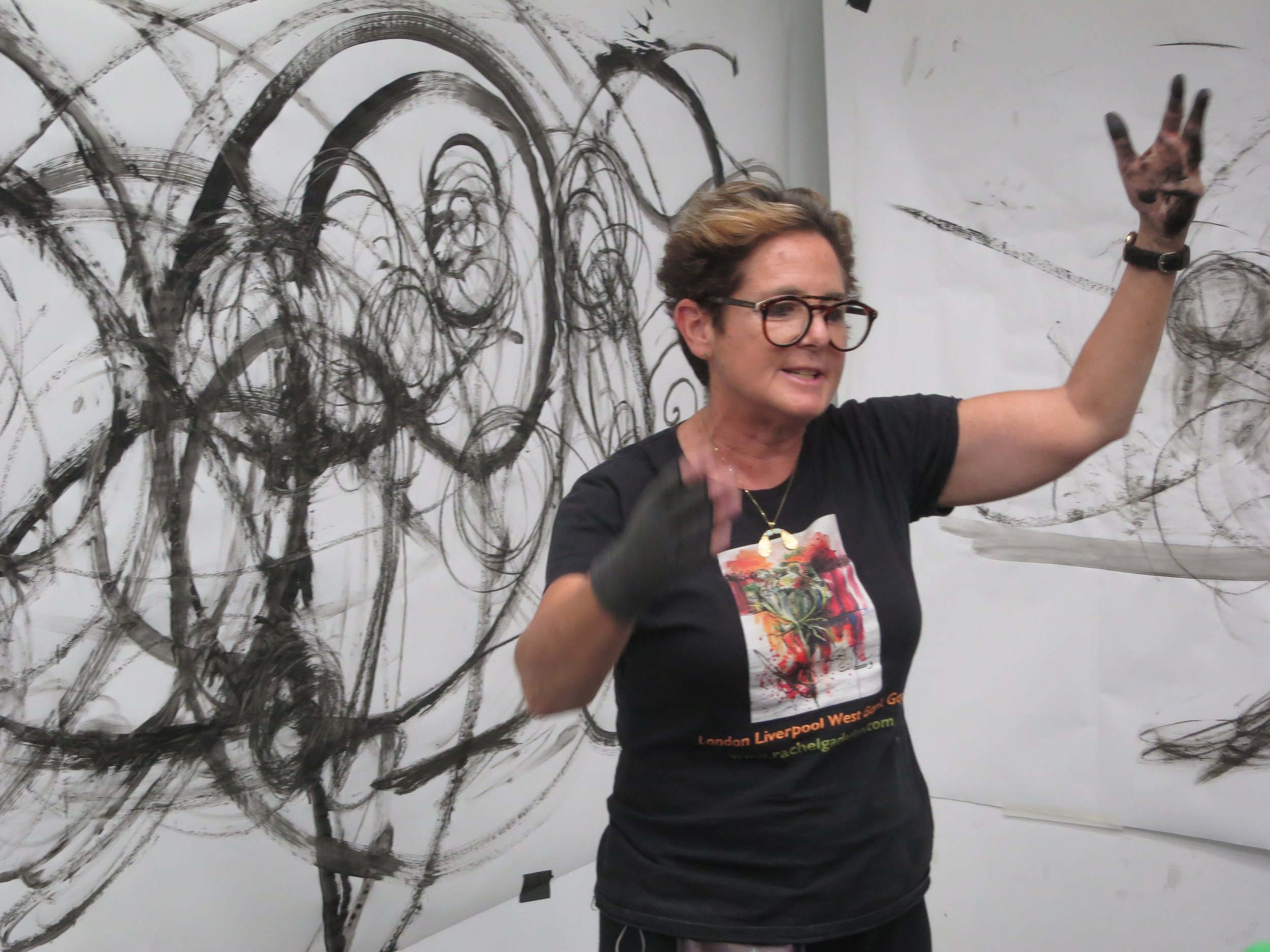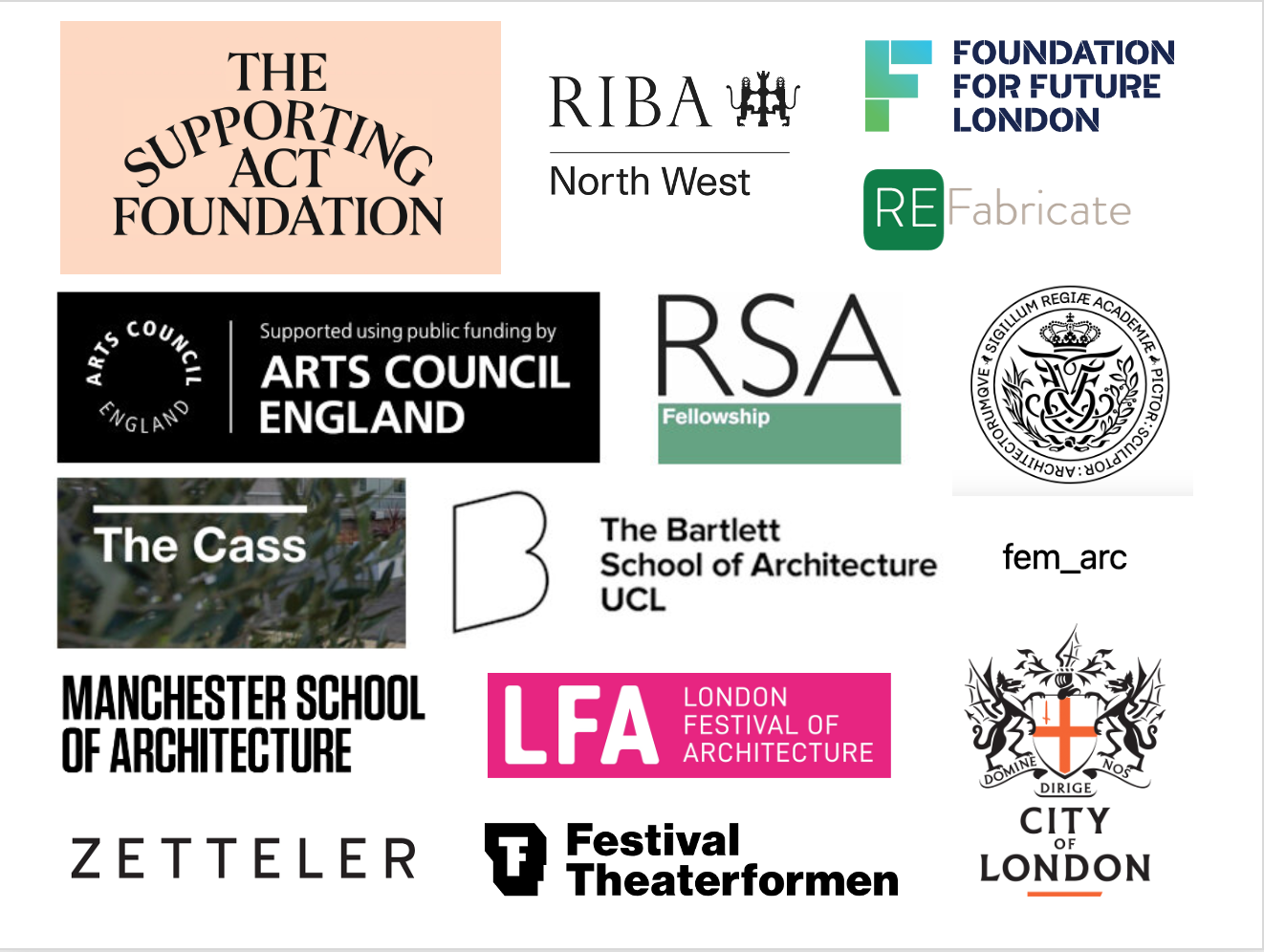Who we are
The DisOrdinary Architecture Project was founded by Zoe Partington and Jos Boys. Since 2007 DisOrdinary Architecture has worked with a number of individuals and organisations. Without each of these artists, practitioners and partners, our projects would not be possible.
Current Team
-

Jos Boys
Jos (She/Her) studied architecture and has worked for many years in feminist and community-based design practices, as well as a researcher, educator, journalist and photographer. She is author of Doing Disability Differently (Routledge 2014) and editor of Disability, Space, Architecture (Routledge 2017) which brings together the best writing on built space from disability studies with innovative ideas about inclusive design, so as to create an important new resource for built environment students, educators and design professionals. She is also co-editor (with Anthony Clarke and John Gardner) of Neurodivergence and Architecture (Elsevier 2022). Jos is currently a Guest Professor at the Royal Danish Academy in Copenhagen, an Honorary Associate Professor at the Knowledge Lab UCL, and works as an independent scholar and consultant.
-

Zoe Partington
Zoe (She/Her) is an artist who works with viscerally powerful audio, visual and tactile representations to explore disabled people’s perceptions and experiences of space. Her practice is informed by her own experiences of sight loss that has taken her and her work on a journey as a tool for change. Zoe also works as a consultant, auditor and creative equality trainer for the cultural sector. Most recent art projects include Decoding Difference (2022), part of Layers of Vision exhibition Bush House London; and Domestic Landscapes (ongoing) where she has worked with diverse disabled women to explore the uses and meanings of their favourite household gadgets. Throughout all her work Zoe is passionate about inclusion and changing the perspectives and stereotypes which modern society often holds about disabled people.
-

Eliza Grosvenor
Eliza (She/Her) is a partially Deaf curator, researcher, artist and activist. Her background lies in the built environment, contemporary art and theatre. Alongside DisOrdinary Architecture, Eliza heads up the programme for an annual architecture festival, supports young creatives from underrepresented backgrounds and has her own artistic practice.
-

Scar Barclay
Scar (they/them) is an architectural designer, maker and educator, whose work explores neuroqueer and queercrip modes of spatial practice. They have experience in designing housing, cultural institutions and exhibitions, currently works on an all-FLINTA* redevelopment of a community centre near Kilburn for LB Camden with what if: projects. Outside of their work with DisOrdinary, Scar is an Associate Lecturer at Central Saint Martins (UAL), teaching on their M ARCH Architecture course.
-

Rachel Siobhán Tyler
Rachel is a transdisciplinary artist, researcher, and producer, working across art, architecture, fashion, and geography; collaborating with artists, designers, and makers. Their research draws on a professional design background and focuses on developing innovative methodologies and approaches to feminist, queer, and inclusive knowledge-making. Foregrounding creative practice-led research, Rachel’s research aims to expand understandings of architecture and heritage. They advocate for equitable, transdisciplinary knowledge exchange and interdisciplinary collaboration across the arts, sciences, and humanities, as well as academic and public collaboration and co-curation. Alongside her role at The DisOrdinary Architecture Project, Rachel is currently a lecturer at Falmouth University, and an independent practitioner. Rachel has held research positions at University College, London (UCL), The Bartlett, Urban Laboratory and Royal Holloway, University of London, where they completed their doctoral research.
Disabled artist, designer and architect collaborators
DisOrdinary Architecture works with many fantastic disabled artists, designers and architects who contribute in many different ways on a project by project basis. Disabled creatives who have only worked on one or two projects are listed under these in the Archive section. Below, we list people who have worked with us regularly and are an important part of our platform.
-
David Dixon
Until recently Dave was Lead Artist/ Programme Co-Ordinator for Chapel Arts Studios in Andover, UK. He is an installation artist and educator, who is interested in uncertainty, impermanence and the active role of subjectivity; and who explores how participation and process can make the work itself be in a constant state of evolution. His work demonstrates how living with a prosthetic can centre creative difference, rather than false binary stereotypes of either able/ disabled or human/ superhuman.
-

Rachel Gadsden
Rachel is an internationally renowned artist whose work concerns cross-cultural visual dialogues that consider the most profound notions of what it is to be human. Her work is often performative and dynamic, working both solo and collaborating with others. Part of her process is about being open about impairment, and working to empower others to find a voice with which to challenge stigma. Ultimately Gadsden’s work is underpinned by themes of fragility and resilience, a shared and positive sense of survival in the face of chronic health conditions, and the politics and mythologies surrounding disability.
-

Chris Laing
Chris is Founder of the Deaf Architecture Front, launched in 2023 and Co-Founder of SignStrokes with Aldolfs Kristapsons. He has been working at Haworth Tompkins since 2017, currently as a Part II Architectural Assistant. Chris is eager to facilitate engagement between the Deaf community and the spatial and architecture practice industry, hoping to see more opportunities for the field of architecture to benefit from the perspective of Deaf people in the near future.
-

Noemi Lakmaier
Noëmi’s work explores notions of the ‘Other’, ranging from the physical to the philosophical, the personal to the political; with particular reference to spatial surroundings, identity and perceptions of the self. Her practice is pre-dominantly site-responsive, live and installation-based. Through the use of everyday materials as well as her own body and the bodies of others, she constructs temporary living installations - alternative physical realities - exploring the psychological implications of power, control and insecurity, the drive to belong and succeed as well as feelings of self-doubt and otherness
-

Raquel Meseguer Zafe
Raquel is a dance theatre practitioner who identifies as disabled and works with rest and horizontality as creative impulses. She founded Unchartered Collective in 2016 to create theatrical encounters that explore the lived experience of invisible disability. Raquel also advocates for a ‘The Resting Spaces Network', asking cultural institutions to widen access for invisible impairment communities by providing resting spaces or horizontal events. Through her projects and talks she seeks to challenge the etiquette of our public spaces and asks us to re-imagine how we might use our public space differently.
-

Mandy Redvers-Rowe
Mandy is a blind theatre director, actor and writer who also works as an accessibility consultant. She has had plays on TV and radio, and has made a number of videos for Northern Broadsides that create ‘word-pictures’ – expressing a poetic engagement with the world that evokes beauty, centred not on the visual but on the qualities of tactile surfaces, sounds, smells and emotion.
Advisory Board
-

Liz Crow
Liz Crow is a disabled person and artist-activist working in durational performance, film, audio and text, drawn to creative work as a tool for change. A former NESTA (National Endowment for Science, Technology and the Arts) fellow and founder of Roaring Girl Productions (www.roaring-girl.com), she has a practice-led PhD in methodologies of activism and ways to extend activist reach and influence. Liz’s work has shown at Tate Modern, British Film Institute, Washington DC’s Kennedy Center and on the Trafalgar Square Fourth Plinth. Liz is currently working on a creative response to climate change and disability with the University of Exeter’s Sensing Climate project.
-

Manijeh Verghese
Manijeh Verghese (she/ her) is the CEO of Open City. Across her career to date, Manijeh has focussed on creating opportunities to widen participation in the making of our built environment. She was co-curator of The Garden of Privatised Delights – the 2021 British Pavilion at the 17th International Venice Architecture Biennale and was the interpretation specialist for the South Asia Gallery at the Manchester Museum in partnership with the British Museum that was co-curated by a collective of over 30 local experts. She was previously the Head of Public Engagement at the Architectural Association (AA) School of Architecture, where she also taught the design studio Diploma Unit 12. She is currently one of the Mayor of London’s Design Advocates, an External Examiner for the M.Arch programme at The Bartlett, UCL and on the Board of Trustees for the Architecture Foundation.
-

Poppy Levison
Poppy (She/Her) is a designer, researcher and disability activist working across the creative industries, including as an Architectural Assistant at DSDHA. As a blind woman, Poppy has a particular interesting expertise in the politics of inclusive design and accessibility, a concern with architecture’s tendency to fixate on the visual rather than the experiential and the accessibility of architecture education. She is coordinator for DisOrdinary Architecture’s Architecture Beyond Sight foundation programme, in collaboration with the Bartlett School of Architecture UCL.
https://www.poppylevison.com/
-

Yates Norton
Yates is a curator at the Roberts Institute of Art, a non-profit contemporary arts organisation. Previously a curator at Rupert, Vilnius, Yates has a commitment to disability justice work and has explored the meanings of interdependence, commitment and allyship across different identities. This has included public talks with collaborator and friend David Ruebain in arts spaces (Serpentine Galleries, London; Institute of Contemporary Arts, London), at universities (Boston, Cambridge, Greenwich), on artists (Stephen Dwoskin) and in journals (Tohu) as well as other exhibitions, including an online show for Unit London.
https://www.therobertsinstituteofart.com/
-

Helen Stratford
Helen (She/Her) is a socially engaged artist and architect, writer, educator & researcher with a PhD in Performative Architectures from the University of Sheffield, UK (2021). Her inter-disciplinary practice, embraces performance, art, architecture, ethnography & civic action. . Working with performative workshops, site-specific interventions, video, speculative writing, and discursive platforms, which often deploy humour and parody, her practice searches for modalities that expand architectural conventions to challenge spatial prejudices produced at the intersections of social, cultural, economic and political relations. Informed by her lived experience of chronic pain, she is currently exploring crip time (en)counters with public space.
www.helenstratford.co.uk
-

Natasha Trotman
Natasha (She/Her) is an Equalities Designer whose practice explores extending the frontiers of knowledge around mental difference, which includes non-typical ways of being, bodyminds and marginalised experiences, in addition to also reframing mainstream notions of equality, equity, diversity, and inclusion towards post-normative equity. This is done via an intersectional design lens; involving the forming of physical interactions through investigative play and policy design. It includes working with neurodiverse communities and people with varied abilities, including dyspraxic and autistic persons, as well as those living with a dementia. She has also worked with their carers and supporters. Natasha has a Masters degree in Information Experience Design at the Royal College of Art. Previously working as a Research Associate at The Royal College of Art's Helen Hamlyn Centre for Inclusive Design (HHCD) as well as at The Wellcome Collection Hub on the Wellcome Trust and HHCD Design and The Mind Research 2 year project focused on engagement and co-creation with neurodiverse groups and neurodivergent individuals. Natasha has exhibited widely, creating multi-modal offerings, interactions and workshops, including a residency at Somerset House, and working with Wellcome, The British Council, The London Design Biennale, The V&A, The National Gallery and Tate Britain.
https://natashamtrotman.com/
-

Jordan Whitewood-Neal
Jordan (He/Him) is an architectural researcher and designer interested in the relationship between architecture and disability, as well as its history in architectural education. He has a Master’s degree in Architecture and Masters in Architectural Research from the University of Brighton and has taught and lectured at multiple schools across the UK including the London School of Architecture, Central Saint Martins and Nottingham Trent University. Jordan has worked for and collaborated with New Architecture Writers, We Made That, Royal College of Arts and the Bartlett School of Architecture on various themes around disability, access to education, and cultural infrastructure. He is also a Young Trustee for the Architecture Foundation and co-founder of disability centred research collective Dis.
@jordan_k_wn
-

James Zakha-Haas
James is a writer, artist and co-founder of Dis, an art and architecture research practice focused on the value of the disabled experience. He studied Culture, Curation and Criticism at Central Saint Martins, UAL, and has written extensively for Disability Arts Online (DAO). He is interested in the ways meaning is expressed through art and writing and blends different disciplines together to create an integrated body of thought. His work probes what it is to experience the world from an altered perspective, understanding how that perspective shapes the way we see, feel and love.
DisOrdinary Architecture supporters
We are also supported by many non-disabled organisations and individuals across architectural and cultural sectors- including museums and galleries, higher education, design practices and community organisations. Where possible, we have recognised this support in our Archive section here.


